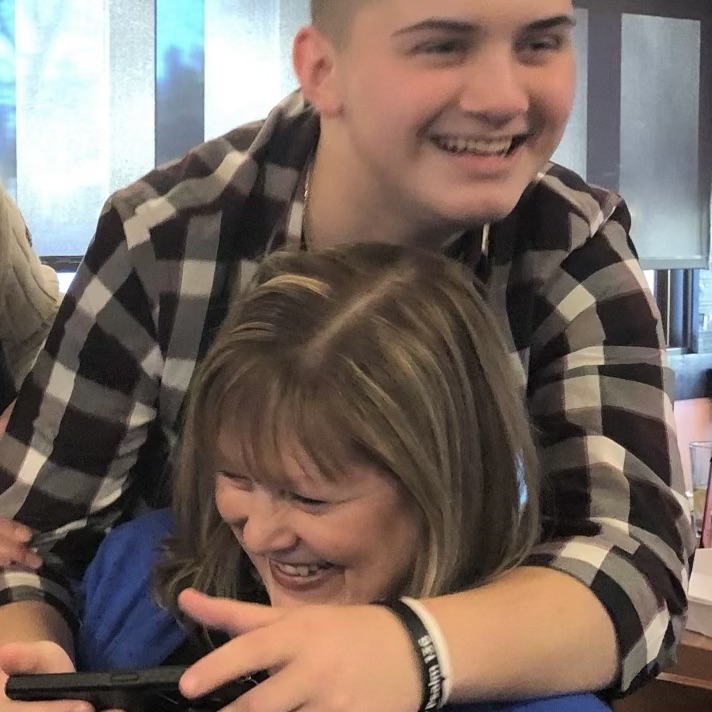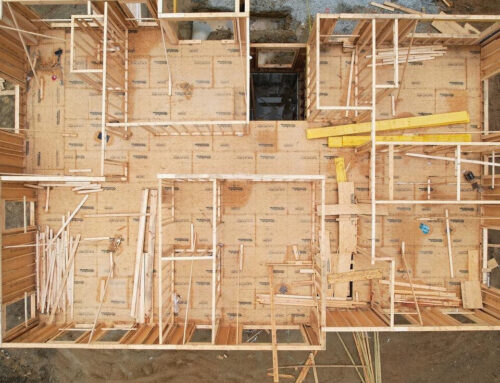There is a Difference featuring Deb Kereczman
October 2, 2023
We are thrilled to be able to share our conversation with one of our favorite people, Deb Kereczman. Deb is the former brand and communications director with Armstrong Ceilings. We asked her to share her experiences with us. We are privileged to have worked with Deb for close to a decade. She is smart, funny, and generous as a person and a client. It is our pleasure to introduce you to Deb Kereczman.
I’m Deb Kereczman. I recently retired, I guess a little over two years ago. I started my career in the ’80s out of college. To start, I wanted to mention I did an internship my senior year of college. I was going to be a school teacher and I did an internship my senior year of college at an ad agency because I had a double major. My other major was English with advertising concentration and I loved it. I felt like, “Wow, this is my place, this is my niche.”
So internships are so important. If you can offer one to a student, do it. And if you can take one as a student, do it. They give you a slice of the real world and a feeling for whether you fit in those shoes. So that was a really great opportunity.
So anyway, out of college, I started at Armstrong. At that time, Armstrong, I thought it would be really cool to sell the decorative accessories that were in our ads, and we got into the direct mail business. And so I worked with that direct mail business the first couple of years at Armstrong. Took a transfer down to Mississippi with my husband, who also worked for Armstrong to put in their first computers. I’m showing my age here, but the Jackson Floor Plant didn’t have computers when we first started and my husband installed them, and there was no place at Armstrong for me to work in Mississippi. And so I went to work as the executive director of the United Cerebral Palsy Association of Mississippi, which was a nonprofit organization.
I had a little bit of professional experience under my belt, but boy, I went to a one woman office and I did the mail. I did the check writing. I did the typing. I paid the bills. I did everything. And I worked for a board of directors, which I had never done before, and that was really interesting. The fact that I was from the North, trying to go work with a Southern board of directors was a real awakening for me. They were great people. A lot of them very passionate. Some of them had children with cerebral palsy that they had their heart and soul was in what they were doing as board members. But I asked to see their business plan and surprisingly, they didn’t have a business plan. They said, “We’re a nonprofit, we don’t do things like that here.” I said, “Well, I think even though you’re a nonprofit,” I had enough business experience to say, ‘if you’re running something and you don’t have a plan, you’re not sure where you’re going, you’re not sure if you’re going to get there and you don’t have goals around the pathway.'”
So we worked together on a business plan, and by the time I was done, I think they saw the need for it. I learned a lot about working with my board of directors, being a Northern girl that wanted everything done fast, and we don’t work that way here in the South. I learned how to adapt and adjust and not always be on a direct path from A to Z. Sometimes you have to bring people along with you and make inroads. So that was a great experience for me, and I got to work with children with cerebral palsy in the programs that we offered, and I’ll never forget that experience. That always gave me a heart for trying to do something for a nonprofit organization. Throughout my career as well. Following Mississippi, we came back to Lancaster. I went back to work again with Armstrong.
Throughout Armstrong in my career. I worked back with the floor division, I worked with the carpet division, I worked with the hardwood division. I worked with the ceilings division toward the end and had all kinds of great experiences. I was there through acquisitions and takeovers and bankruptcies, and Armstrong has had its highs and its lows, but I feel like I was shaped by all of those experiences. And no matter which division I then worked for, I had something to bring to the party. I felt like I could make a difference at Armstrong. And all those experiences led up to being able to feel confident that no matter what division I went to, there were things I could do there. There were things I could bring to the party.
I was there through the DIY revolution where for a vinyl flooring company to realize a DIYer could put in ceramic tile by themselves and have ceramic tile, which they really, really wanted instead of vinyl for the same price, that was a shift in the world that really made a difference. Pendulum swings business things that we went through. The sale of our brand to non-America’s companies over the pond was just unfathomable to me. But the Armstrong brand name meant something. And through the years, that was one of the things I was proud to work on year after year to really make a brand evolve and allow our customers and experience so that they knew what they could count on with Armstrong. During those changes, I would say highlights might be when I was with American Olean, we created the first ever ceramic tile merchandising system. Before when you went to buy ceramic tile, it was leaning up against the wall, a 12 by 12 or whatever size tile it was in a box with dust all over it.
There were no pictures, there were no benefits, there was no care information. And we worked with a great design firm that helped us create a display and use pictures and show people what the ceramic tile would look like installed. And that was something Armstrong was always good at, helping people visualize their products in their homes. And so I would say that was a highlight for that industry. I also was fortunate to do the first global branding work for Armstrong when we had companies all over the world and work across our division, so flooring and ceilings together at that point in time, and then update that brand on an ongoing basis. And Shawn, you know about that because your agency helped us with some of those updates. I remember you coming up to me at a trade show when we first launched that new brand and you said, “Can you handle some positive reinforcement and some opportunities for enhancement?”
You said it very nicely, and I was like, “Sure.” And I think I had a pretty simple color scheme, and you said you’re like an interior design company and you need to have that pop of color that goes along with what you’re doing with your brand. And indeed, you brought a very passionate peony-ish orange to our brand palette with us among other things. So it was fun to update the brand as brands have had to do through the years to give it more flavor and more interest and more passion with our colors because we were passionate about our products, our customers were passionate about our products and our brand colors should reflect that. I think the third highlight I would say was launching our ceiling systems and mobile showroom that actually took all of our products on the road to our customers, and we would work with our reps and schedule their customers to come and visit the mobile showroom.
We would tell the history of the company, show all the new products that we have, highlight any specific things we wanted to show them in person that were just sort of difficult to share through a product catalog and those one-on-one conversations about their jobs and their projects and our solutions that help them meet their needs. That was something so very valuable to relationship building and understanding what they needed. So I would say those are the three probably key highlights from across my career.
What was the favorite part of your job?
The one thing about my job was that there was never anything for sure. Every day was different. There were creative challenges, there were new products, there were challenges with products, there were communication, things to overcome, hurdles to figure out, how to handle opportunities to do new things. And creativity and new ideas were encouraged. So I think that really was the most memorable and favorite part of my job. It was never the same. And that’s a great world to be in if you’re a creative kind of person.
What would you have done differently?
What would I have done differently? I think growing as I grew older, as I had more experience in my career, I think as I had more experience in my career, I realized the power of collaboration with people maybe that didn’t even know things about branding or communications, with customers especially. I think at Armstrong, we always were customer focused, and that isn’t something I learned to do. That was something that was built into my DNA and Armstrong’s DNA. I think the idea of collaborating with non-communications people and with customers and with partners like you, Shawn, is something that as I latched onto that, I realized how powerful it could be. So I would latch on sooner. That’s what I would do differently.
How did branding and communications change during your tenure?
So, at the time I started working, there was not a web. There was not an internet. We did not use computers. We used little pink phone pads that anyone my age will remember, and you did things over the phone and hey, when you had a conference call, that was a big deal. We just didn’t have the technology. There was no Google, there was no social media, there was no Zooming. We didn’t have the tools to do the collaborating when I started working. And there was mass advertising, everything was mass. We didn’t have the ability to tailor it. It was normally print advertising. You could appeal with what you were doing in print, but you didn’t have the ability to enhance it with all the senses like you do now.
It was a huge deal when Blackberries came out, when there were car phones, I’m really, really dating myself now, and paper was everywhere. Everything was paper and everything was static. You couldn’t change it. You couldn’t customize it, you couldn’t tailor it. Once you had it in stone, it was set in stone. And we remember the days of newspapers and co-op funds, and Armstrong was the brand. We had the brand power. And I remember the shift when the DIY market changed, and Home Depot came along and we used to tell Home Depot, “Here’s what you’ll do in your ads.” And eventually Home Depot said to us, “Here’s what we’ll do in our ads.” So there was a power shift in who was controlling the co-op money and how they were going to use that co-op money during the time that I was there. I think as far as brands go, we went from a small communications toolbox to a huge toolbox almost that didn’t have a lid on it.
In the old days, we were protecting logos and trademarks, and we weren’t able to use all those tools to establish total identities for brands. Brand identities have grown to have personalities and so many more depths and dimensions to them, associations with social causes and senses and tugging out heartstrings some of our brands and building brand loyalty like we never imagined brand loyalty. Now, companies can give you a virtual experience. You can walk through the space and see something before you buy it, before you experience it. And I get something overnight, and there’s still that little piece of me that says soon they’re going to be able to do it faster than overnight. And sometimes that doesn’t seem fast enough. So many things have changed because of the intranet and so many strong brands have come through and shown us how to evolve brands and how to make them so dimensional with so much more to a brand than there was when we first started.
What has stayed the same?
So, I was blessed to work with the same company most of my career. And I would say what would never change and that I admire a lot, is that Armstrong had core values and they did not change from the day I went there until 38 years later when I retired. We always had a drive to do better and to be better and to provide solutions to our customers. And that meant we needed to understand our customer’s problems and then literally craft solutions and ways to help them address those problems. I also think we have always stood behind things with the credo of let the buyer have faith. And there’s actually a story we used to tell in the mobile showroom holding an Armstrong Cork in our hands of Thomas Armstrong, whose sodas with an Armstrong Cork in them. And Thomas insisted on putting the Armstrong logo, the Armstrong brand on his corks.
And there was a street fair in Pittsburgh, and the sodas went flat and people complained and they thought it was because of the corks, and it was likely not because of the corks, but Thomas’s brand was on them. So Armstrong was the one that got the call, and he allegedly took a wagon with new Italian sodas up to the street fair on his own, and made sure that there were new fresh Italian sodas for everyone to have. Now, it wasn’t necessarily his fault that the corks failed and that the sodas went flat. It’s probably someone who packed them or whatever. But the bottom line was they had the Armstrong brand on those corks, and he wanted to stand behind his product. And so it was probably, they set an expensive fix for a young company starting out, but that’s how much he believed in standing behind the brand. And I think that’s something that’s a value that we still hold true to today.
What is your marketing and communications philosophy or approach?
So that one’s a simple question, Shawn. I think if you listen to your customers and you understand what they need, then you understand how to resonate with them and how to make sure that what you’re doing is meaningful to them. So do what they tell you. We always had a really outstanding product catalog, and we would go and research with customers any new ideas we had, and listen to them and listen to what they wish they had, that they didn’t have. And we would take even out of this world ideas, what is it that you really wish we could do with this? And then we would try and do that exactly what they told us in the next version of the catalog. And we always got great kudos because of that. And so if you do what they tell you, I don’t think you can go wrong.
And then I also think when you’re doing what you’re doing, if you’re doing it with your heart in the right place, whether it’s supervising people or establishing new relationships with customers, if you do it with your heart in the right place, it’ll take you to the right place with that person or with that thing that you’re doing. I have two quotes that I like. One of them is from Zig Ziglar who said, “Positive thinking will let you do everything better than negative thinking will.” So I always like to look at the positive side of things. When someone to me said to me, “We have a problem.” They know. I will say to them, “We have an opportunity.” And I know I didn’t make that up, but I do believe in it.
And the second quote I took was from Jimmy Johnson, football coach Jimmy Johnson, “The difference between ordinary and extraordinary is that little extra.” And so I think that’s what we always try to do with our marketing communications, our branding, is do something a little extra, give it a little twist, give it a little flare, make it a little unusual. That was always so appreciated by our customers. And we had architects and interior designers as customers, so they were probably extra appreciative.
Is that where the phenomenal photography came from?
Well, we started with the front covers of the Seven Sisters magazines with our product photography of flooring. And it was never an ordinary room. It was always an extraordinary room. It was always a room that as a homeowner you wanted to have in your house, and it wasn’t like an average house. There was always something special about it. And I think we realized the power of photography, the power of showing our products in context, real world context, and allowing people to see what the products look like in place, whether it was a homeowner or whether it was an architecture interior designer, to give them ideas. That’s just so powerful. And so Armstrong always invested in high quality photography. We worked with great photographers and we would not settle for anything but really extraordinary photos. And we worked a lot with our customers.
We networked with them as they had a job, and our reps would say, “Hey, that’s a beautiful job.” They would come to us and say, “We will give you permission to photograph this.” So there was networking with Armstrong and the customers to show the front cover of the catalog was a big decision. Whose job is going to go on the front cover or whose job is going to go on the front page of the website? But we always took pride in that, whether it was the residential side of the business or I talked a little bit about the ceramic tile merchandising, putting photos of room scenes for the first time ever on ceramic samples. Photography was always something we were very dedicated to.
What advice would you give to someone starting out?
So, someone starting out, grab all the experience you can, do it for free if you have to get the experience, but go do it. If someone looks like they’re struggling, for instance, with social media, offer to do something to help them, just take on experiences without asking for a dollar back, because those experience will lead to relationships that will ultimately probably lead to something good for you, whether it’s a recommendation or something to put in a portfolio, but take on experiences and do it with an open mind. Nothing is too simple to do. Nothing is below you. Just do it. Just if it’s coffee, get coffee with a smile, and that will really pay back in the long term for you. Try and find a company that’s your first job that you respect what they do and you believe in what they believe in. And don’t settle for anything less.
If you’re doing something to pay your dues, okay, pay your dues, but you really want to do something you love if you can, because then it’s not a problem to go to work every day. You love going to work every day. And the challenges that are coming up. I actually have a quote from Oprah Winfrey that’s on my refrigerator that she gave to college grads this past year, and she said, “There will never be anything in your life as fulfilling as making a difference in somebody else’s. Everybody wants to see you take your integrity, your curiosity, your creativity, your guts, and use it to make a difference. I’ll tell you where you start. You start by being good to at least one other person every single day. Just start there. That’s how you begin to change the world.” And that’s so simple. That’s such good advice. Just do something nice for somebody every day, and no matter what job you go into, that’s going to make a difference for you.
What advice do you have for those trying to figure out how to retire?
How to retire? That’s kind of an odd question, but I did it so I should know the answer to this question. And I think if you’re financially stable, that’s a big thing. Because to retire and not be financially stable, it is just not going to allow you to enjoy the retirement. But if you do, I say go for it. If you don’t have any idea of how you would spend your time, I mean, you need to think that through. But the blessing to me was in the old days, I had a lot of other things that I did in addition to my job, and I had to work those things around my job. Now I don’t have the job that I have to juggle that around, so it’s a nice flip for me to not have to be doing all that scheduling and juggling and balancing now anymore.
I can do those things that I always enjoy doing, but I can do them without having to fit them in between meetings and weekends and nights and things like that. So I think I never wanted my tombstone to say that I sold billions of square feet of ceramic tile or flooring or ceilings, but I wanted it to say I was a good person and I had good values and I allowed other people to make a good living that were on my team and have good work-life balance. But since retirement and having a little bit more perspective, I’ve been actually using my branding background and helping my church work on a five-year plan and branding for the church as well.
And I hope that’ll get my tombstone to say something more about tirelessly trying to bring people to a church and know God. And I also like what Oprah said about doing something good for another person every day because I know all of us can do that. So if you’re going to retire, think about those things that you do that help other people, and maybe that’s how you find the shoe that fits for you in retirement.
Thank you, Deb.





